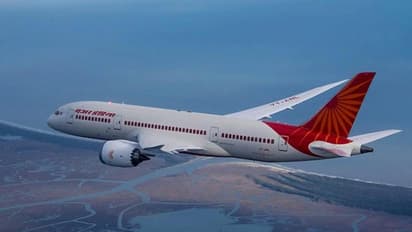Do you know planes NEVER planes fly over Tibet? Here's why

Synopsis
Discover why airplanes avoid flying over the Tibetan Plateau, also known as the 'Roof of the World'. Explore the geographical challenges, extreme weather conditions, and safety concerns that make this region a no-fly zone for commercial flights.
Traveling by plane can be an exciting experience for some. But for pilots flying a plane is a challenging task. Flying thousands of meters above the ground is no ordinary feat. It is the pilot's responsibility to safely transport hundreds of passengers to their destination. But pilots are afraid to fly over this area above the ground. There are no restrictions on air travel over this area. There will be no fear of terrorists. Yet no planes fly over this place.
Today we are talking about the Tibet region. Tibet, which shares a border with China, and is close to India, is one of the most beautiful places in the world. The whole of Tibet is an area completely covered with mountains. Against this backdrop, no Asian aircraft fly over Tibet. Pilots are afraid to fly this route as this area is recognized as the most dangerous for air travel as it is a very high altitude area with many high mountains in this part. This region is called the roof of the world.
It covers an area of 2.5 million square kilometers and is 4,500 meters (14,764 feet) high. Mount Everest and K2, the highest places in the world, are also located in this part. As there is a lack of oxygen in this part, there are chances of engine failure in any case. Flying in this part requires more fuel to keep the engine running.
Due to the high mountains, the planes have to fly at a higher altitude than them. Along with all this, there is extreme weather here at any time. In this case, there are chances of planes crashing into mountains. For all these reasons, planes do not fly over Tibet. Here, due to weather changes, there is a high risk of aircraft getting caught in pressure swirls and losing control. In this case, it is not possible from here to find a safe place for the planes to land and carry out the operation rescue operation. The Tibetan Plateau is known for its harsh and unpredictable weather. Meteorologists advise that strong winds and sudden weather changes are not suitable for aircraft operations. Weather conditions can make it difficult for pilots to navigate properly. For all these reasons, there is a risk of an accident. Flying over high terrain is considered dangerous.
Explore the latest Lifestyle News covering fashion, wellness, travel, Food and Recipes, and more. Stay updated with trending Health News, fitness tips, and expert insights to inspire your daily living. Discover personalized lifestyle trends that keep you stylish and informed. Download the Asianet News Official App from the Android Play Store and iPhone App Store for everything that adds value to your everyday life.